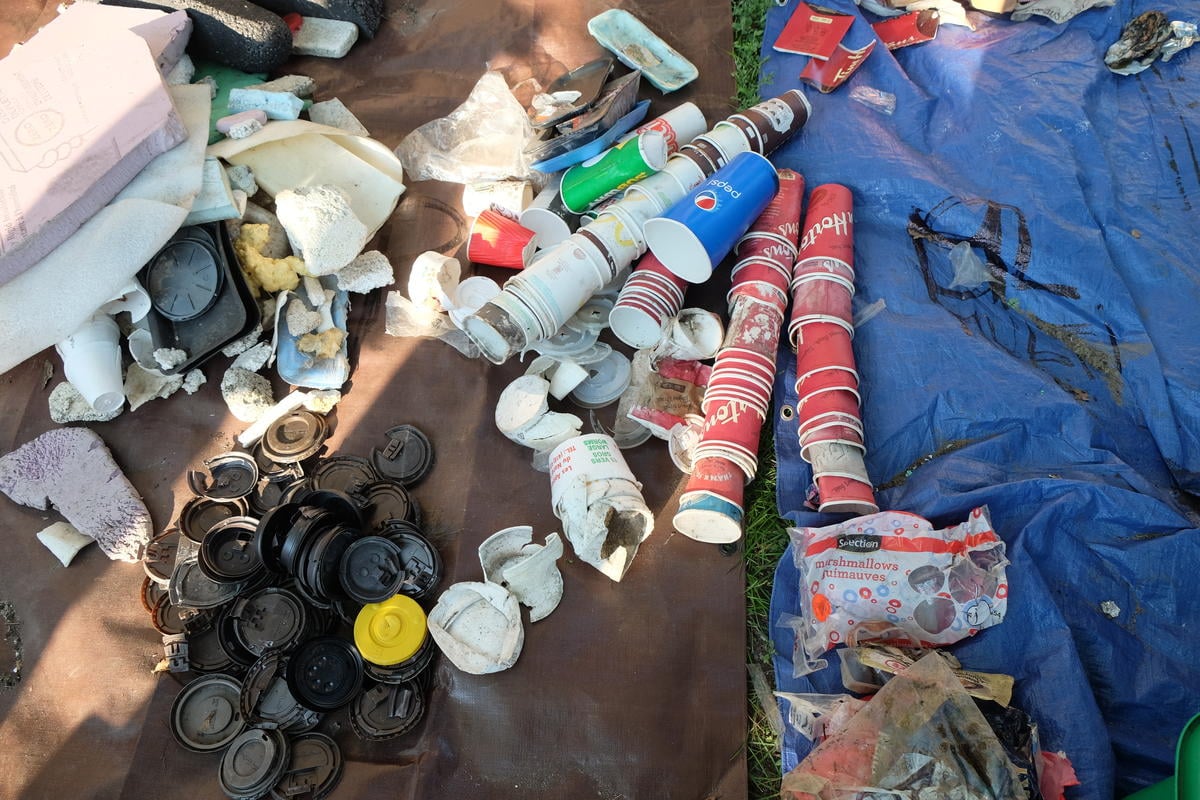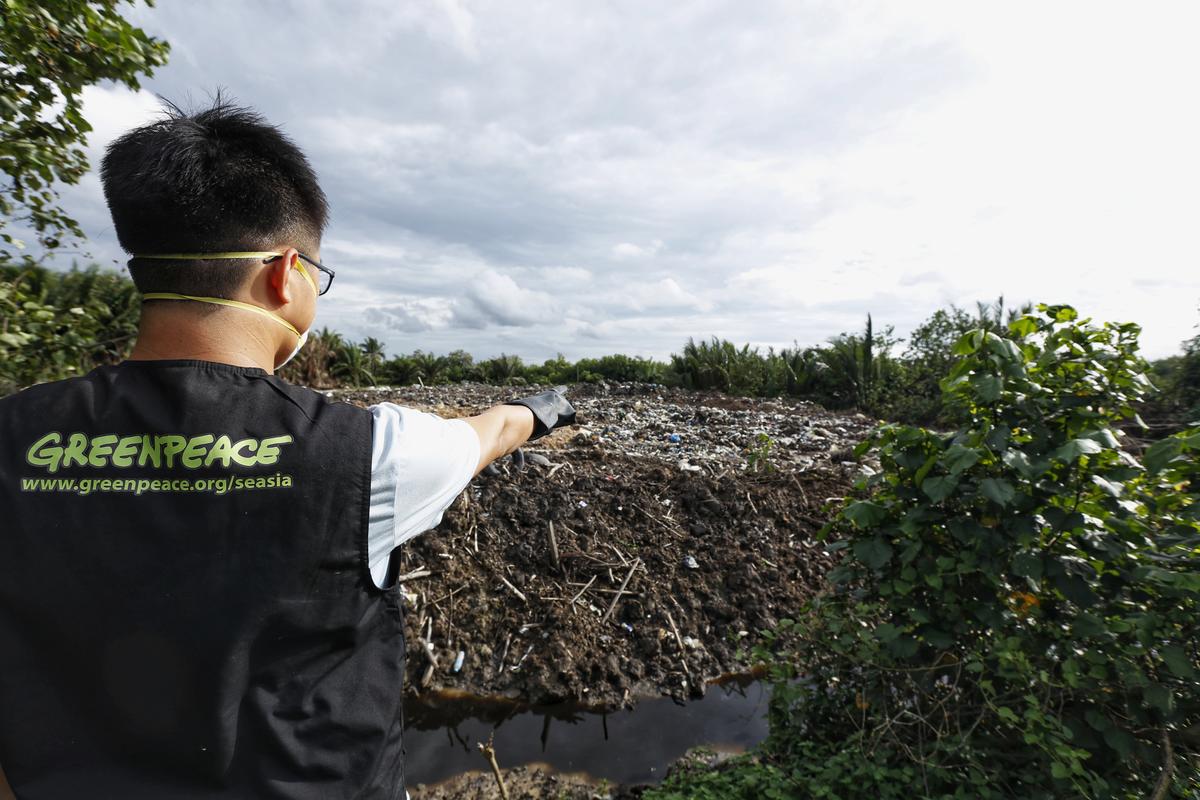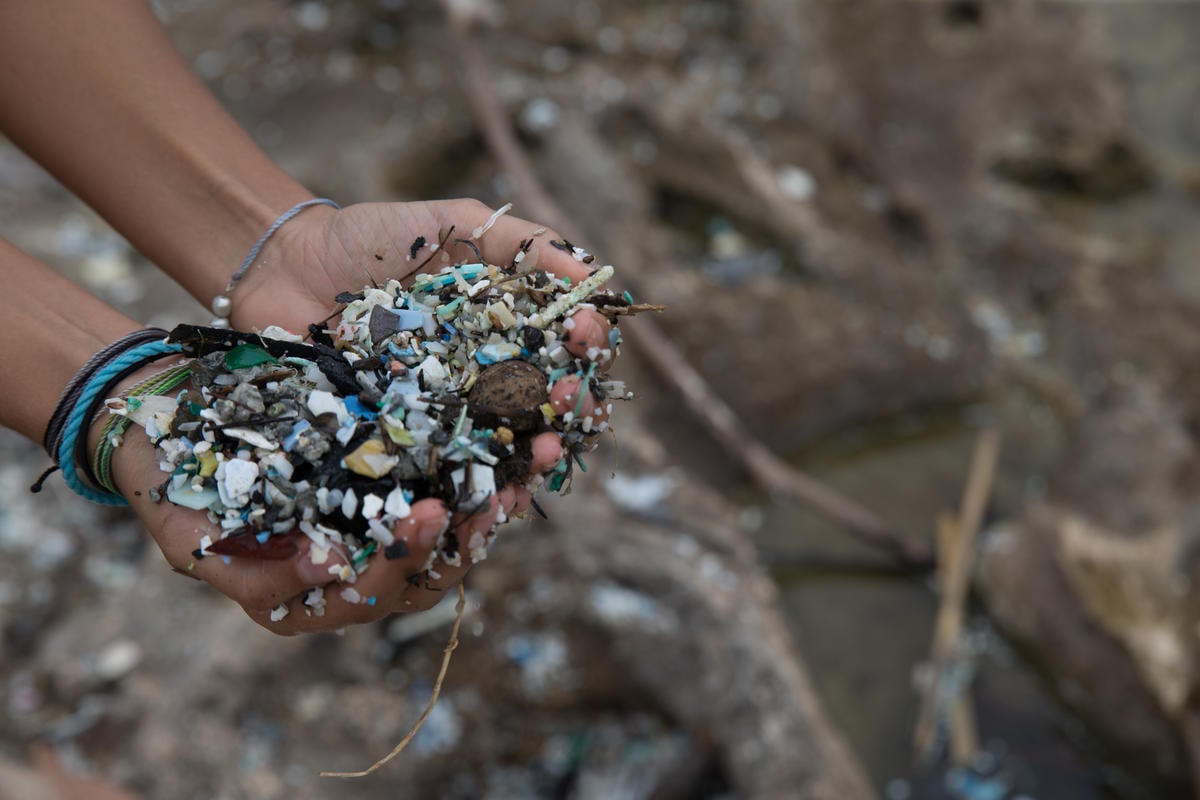Last week we were met with surprising, but welcome, news that the Trudeau government plans to ban certain single-use plastics as early as 2021. This is the news that we’ve been waiting for since we started our campaign to stop plastic pollution at the source. It’s what over 27,000 Canadians asked for through Greenpeace’s submission tool for the national zero waste strategy public consultation. And it’s what is necessary to tackle this plastic nightmare. But it’s the details that matter. Since the Trudeau government hasn’t provided much detail, we’ll fill in the blanks.
To address all the issues associated with the over 3 million tonnes of plastic waste generated in Canada each year, including our contribution to the spread of plastic pollution, here is a list of 10 single-use items that the government should start with banning, as it moves toward a phase-out of all non-essential plastics:
- Bags
- Takeaway cups and their lid
- Bottles and their caps
- Utensils
- Stir sticks
- Take-out containers
- Cotton swabs
- Tampon applicators
- Straws
- Cigarette filters
These disposable items are among the most regularly found trash in the environment, whether in Canada or elsewhere in the world. Most of them are not recyclable or are often landfilled despite recyclability claims. The good news is that there is a reusable or compostable alternative for nine of them!

In September 2018, in the occasion of World Clean-up Day, Greenpeace alongside community allies, volunteers, and Greenpeace local groups coordinated clean-up activities and plastic polluter brand audit in five Canadian cities. The audit sought to identify the major corporate contributors to plastic waste polluting shorelines, green spaces, and communities.
When we take a look at the numerous types of plastic that are produced, think the number on the bottom of the container or all the different colours and textures, there are various types that are not recyclable or have very low rates of recyclability, and/or that contain chemicals that are harmful to human health and the environment. Among the most problematic include:
- Multilayer plastic packaging
- Polystyrene and expanded polystyrene (styrofoam)
- Oxo-degradable plastics
- Black and colored plastics
- PVC
We now know that more than 90% of Canadian plastic waste is actually incinerated, sent to landfills or ends up in the environment. And a large portion of what is diverted for recycling is exported, often to countries in the Global South that are already struggling to cope with their own plastic waste crisis. Our recycling system is broken and the sheer volume of plastic produced and disposed of each day can never be captured to achieve the country’s zero plastic waste goals.

Greenpeace Malaysia has been conducting a field investigation on the broken system of recycling and how it impacts Malaysian society. The findings were shocking: since China banned plastic waste imports in January 2018, countries in Southeast Asia – particularly Vietnam, Thailand and Malaysia – became new ‘dump sites’ of plastic waste from industrialized countries. The investigation found illegal practices, and blatant violations causing environmental pollution as well as harming people’s health conditions.
So, how do we ensure a ban includes these lists?
The Trudeau government has said it intends to move towards listing plastic waste as Toxic under the Canadian Environmental Protection Act (CEPA). The first step the government should take is to act quickly to do that. This would allow the creation of regulations addressing the impacts of plastic waste, including bans. Ideally, it would result in a ban on the production, sale, and distribution of packaging and types of plastics that are the most problematic and harmful to the environment, wildlife and human health.
If the current government can list plastic waste under CEPA before the next election, we have a greater chance of the ban happening moving forward. A scientific assessment is underway to determine whether plastic should be listed, but we know that so much of the throwaway plastic flooding our lives and the environment is toxic and harmful to all life on Earth.

Campaigners visit James Campbell National Wildlife Refuge on Oahu Island to document and bear witness to plastic pollution. Greenpeace is tracing plastic found in the ocean, communities, and shorelines back to the companies that produce it.
How can you help secure a strong ban?
With federal elections fast approaching, the window for action is shrinking. We need the current government and all federal MPs to know that there is wide support for single-use plastics bans, that we want it listed as Toxic asap, and that we want the Canadian government, whoever is in power, to work towards a new system that doesn’t fuel the plastic pollution, and climate, crises.
If you have not done so already, please take 2 minutes to send a message to your federal MP and tell them that you support the ban on single-use plastics. So far almost 10,000 emails have been sent. Let’s keep up the pressure and double that number!
